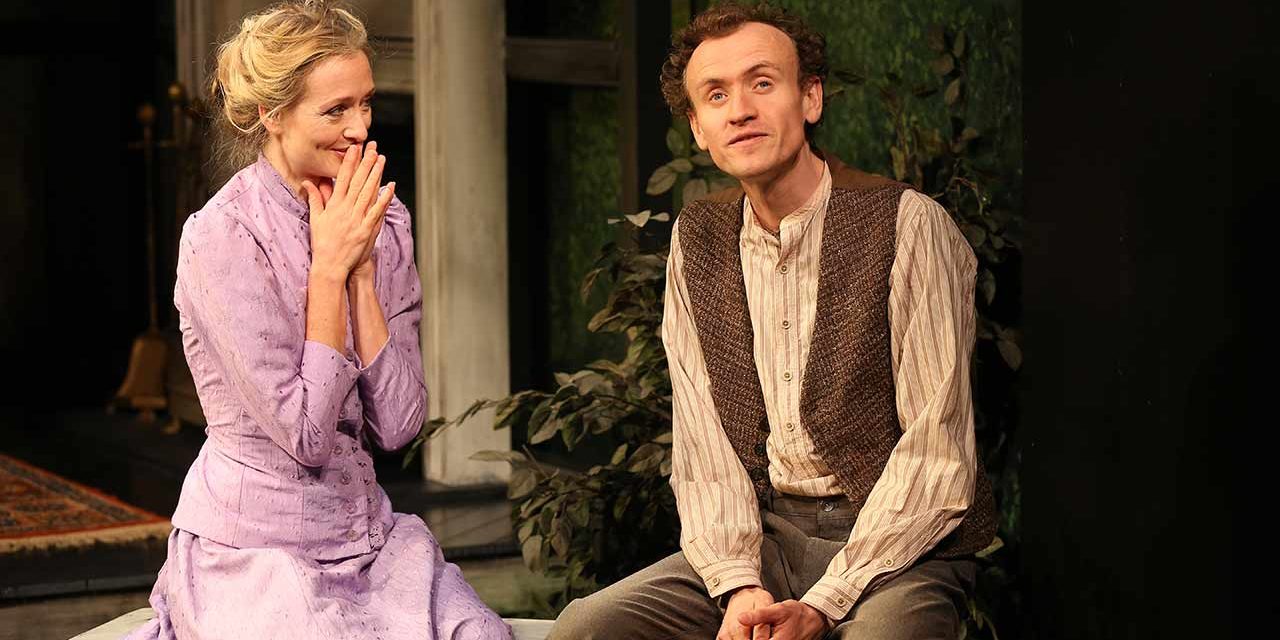“I don’t really see myself as a designer; I see myself more as a musician and creator, because I’m creating content.”
How veteran sound designer and composer Ryan Rumery approached The Home Place
What does home sound like? Late Irish dramatist Brian Friel raises that question in The Home Place, and for the play’s New York premiere, Irish Repertory Theatre has enlisted Ryan Rumery to come up with an answer.
This year’s recipient of the Obie Award for Sustained Excellence of Sound Design, Rumery has worked on more than 250 productions, several at Irish Rep. He was happy to return for The Home Place because the company offers him an uncommon amount of freedom as a designer. “They’re a really special theatre, especially in New York,” he explains. “More and more in design right now, it’s getting rarer and rarer that theatres are hiring you because they like what you do. So many times a theatre or producer is trying to cookie-cutter your process into what they want to do.”
For Rumery’s inaugural show at Irish Rep, the 2009 production of Eugene O’Neill’s Caribbean-set The Emperor Jones, he used his talents as a longtime drummer, pounding away on congas, bongos, mbira, and other percussion instruments. It was indicative of how he likes to work. “I don’t really see myself as a designer; I see myself more as a musician and creator, because I’m creating content,” he says. “Ultimately, the sound becomes another character in that type of play.”
While there’s no drumming in The Home Place, Rumery was still encouraged to march to his own beat. And he used a song by Thomas Moore (1779-1852), “Oft in the Stilly Night,” an elegiac ballad about better days gone by, as inspiration. Set in 1878 when clover-blooded Irishmen lionized Moore as the voice of their nation, the play centers on a comely housekeeper named Margaret O’Donnell (Rachel Pickup), who looks after a lodge in the fictional hamlet of Ballybeg. She has turned her back on her thoroughbred Irish family, preferring the company of her Anglo-Irish landlord, Christopher (John Windsor-Cunningham), and his harebrained son, David (Ed Malone), both of whom have fallen hopelessly in love with the lass. When the play opens, the air hangs heavy with trepidation and grief, because Irish rebels have murdered an English landowner. Christopher can only pray that he won’t be next.

“Oft in the Stilly Night,” which Friel specifies in the script, helps set the gloomy mood, with a choir of schoolchildren singing it in the distance at the beginning and end of the drama. “It defines the time, and it also keys into the mournful quality that the play has,” Rumery observes. “You have this landmark that Brian Friel has given you, and I’m definitely one of those people who’re like, ‘He said it, so he meant it. So, we should do it. Things should revolve around that.’ And that set up the whole sound fabric of the play.”
After music director John Bell arranged Moore’s song in resplendent three-part harmony, Rumery wrote his incidental music to match. “I don’t really read music, but I’m really in tune to what key things are in,” he says. “So the score was based around that.” But Rumery says he really put his stamp on the production during the recording process. “I have this old upright piano at home — I really enjoy playing it — and that’s the one I used for the score. It’s this great piano, because it’s not perfect or polished.”
So what does home sound like in The Home Place? At the play’s end, when Margaret must determine where and with whom her heart lies — the English or the Irish, Christopher or David — she hears the final strains of “Stilly Night.” And just like that she loses herself in wistful reminiscence, in the sound of her childhood, her family, her home.
